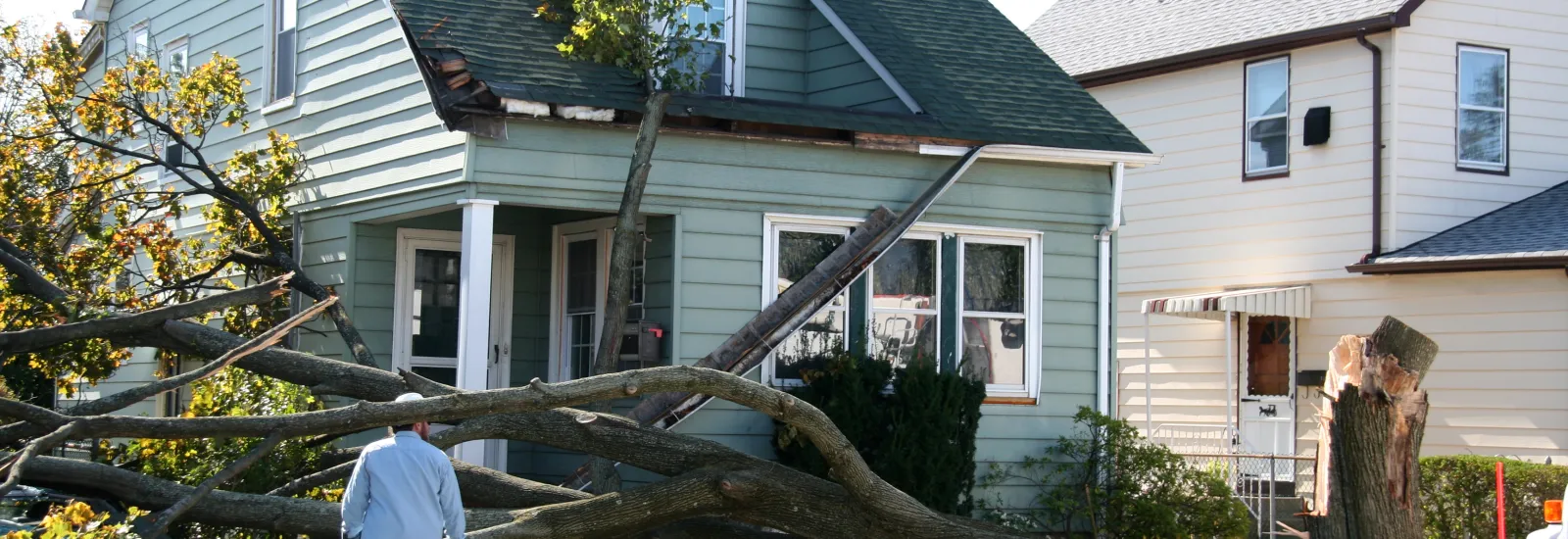Storm damage is one of the most common ways roofs fall into disrepair—especially when that damage develops prior to the roof reaching its average life expectancy. Wind, hail, heavy rain, and falling objects can all inflict a wide range of damage to a residential roof, and while some forms of damage are easy to spot, others can be difficult or even impossible to see—especially from the street level.
Early detection of this damage, though, is crucial when it comes to minimizing damage and even getting by with roof repairs rather than springing for a full replacement. If your home has recently been hit by severe weather, it's worth your time to make a quick inspection of your roof to check for damage.
Common Signs of Roof Damage Caused By Storms
Most homeowners overlook storm damage because they don't always know what this damage looks like. Here are the common types of damage you will find on your roof after a storm:
- Bent shingles. This is typically caused by high winds that get underneath asphalt shingles and bend them backward, resulting in wind damage to your roof that reduces shingle integrity and possible cracking.
- Missing shingles. This is often the most obvious sign of wind damage to shingles, caused by high winds that tear asphalt or wood shingles from their anchoring nails.
- Worn spots on asphalt shingles. While worn spots may be a sign of hail damage to shingles, these worn spots can have other causes as well, including falling branches or other debris that strips the shingles of granules and accelerates their depreciation. Worn spots may also be more likely on shingles that are nearing or past their life expectancy.
- Dented shingles and/or flashing. These dents—which may range from hardly visible to showing clear signs of granule loss on asphalt shingles—are likely evidence of hail damage on your roof, especially if the dents are numerous and scattered across a section of your roof or the entire roof.
- Black spots. What does hail damage look like on a roof? The answer is complicated: depending on the size of the hail and the characteristics of the storm, hail can cause a wide range of damage. One of the most obvious signs of hail damage, though, is the presence of black spots that have appeared on your home's roof.
- Loose flashing. Loose flashing is most likely the product of high winds, although in some cases the flashing's seal may be weakened due to age, and/or as a result of water exposure. Some of this exposure may have happened in a recent storm, but it's more likely that the water damage occurred over a long period of time.
- Missing or dented gutters. If gutters have blown off, the wind is the likely cause, or a falling branch may have knocked a gutter loose. If the gutters have dents similar to the dents on your roof, this is likely the result of hail damage.
- Asphalt granules clogging your downspout. If you don't see visible damage but notice a large amounte of asphalt granules running off your roof, it's possible that unseen damage has stripped away some of your shingles' protective layers.
How Much Hail Damage Does it Take to Replace A Roof?
In some cases, assessing hail damage—and making the decision to replace your roof's shingles—may be an inexact science. Very mild cases of hail damage, such as dents or worn spots that can't be conclusively tied to the hail itself, could become difficult for homeowners to have their claims approved by an insurance company.
In other cases, hail damage may only affect a portion of your roof, rather than the entire house. This is common in cases where large trees shielded the majority of your home from oncoming hail. In cases where hail damage is confined to one section, a roofing company may recommend reroofing only that section, and leaving the rest of the roof intact.
What Do I Do If I Suspect Roof Storm Damage?
While homeowners may be able to identify roof damage on their own, they might not be able to understand the full scope of this damage—including whether the damage can be repaired, or if it's time to replace the roof entirely. A local roofing company can send out a member of its team to professionally inspect this damage and explain its extent to you.
A roofing company may also be able to assist in conversations with your insurance company, expediting the process of getting approval for repairs to be covered by your policy. Call a local roofing company and your insurance provider as soon as possible to start the process of evaluating your claim, defining the scope of repair needs, and setting a timeline for a full repair.
Storm damage to your shingles or roof may be a headache, but a quick response will spare you of even worse consequences—and, in many cases, higher repair or replacements, too.
